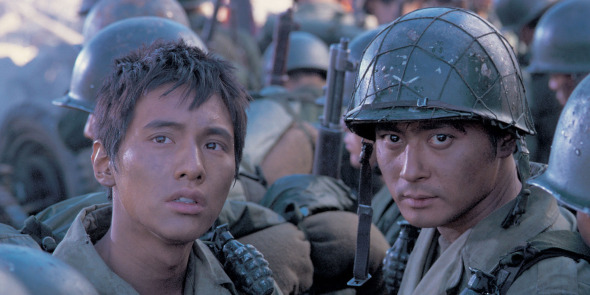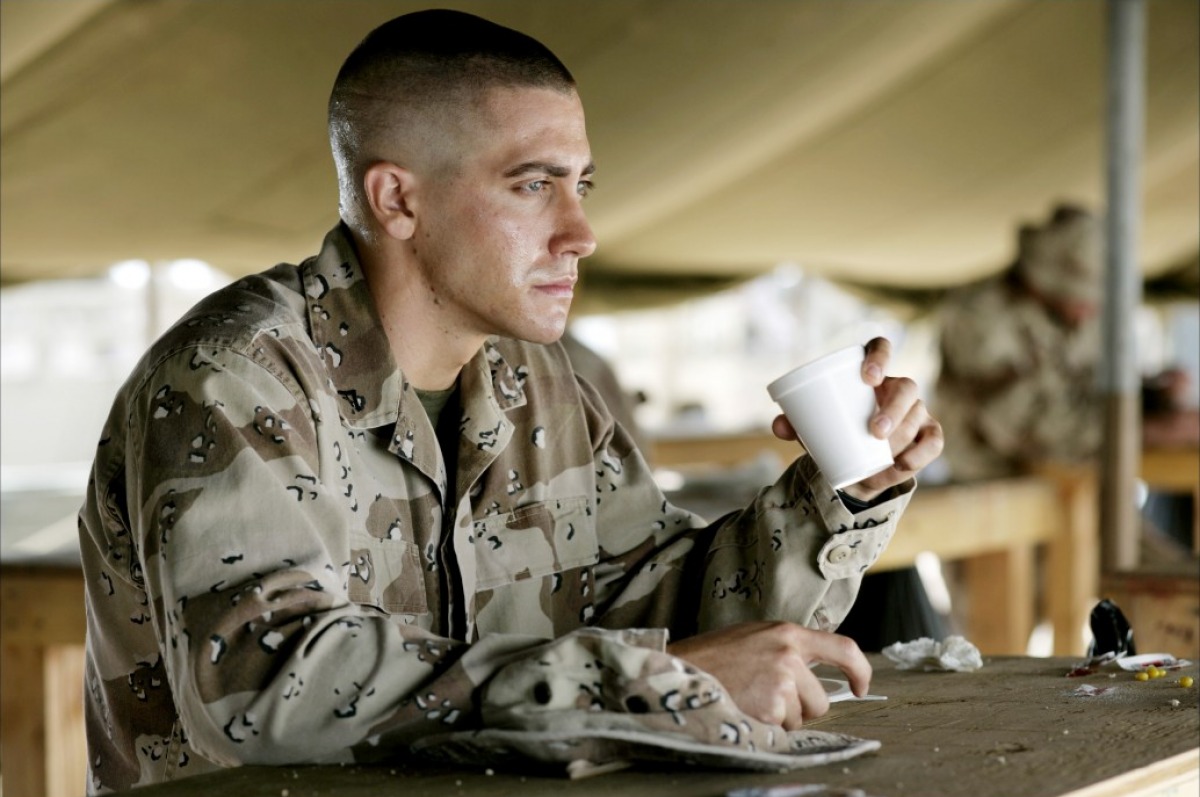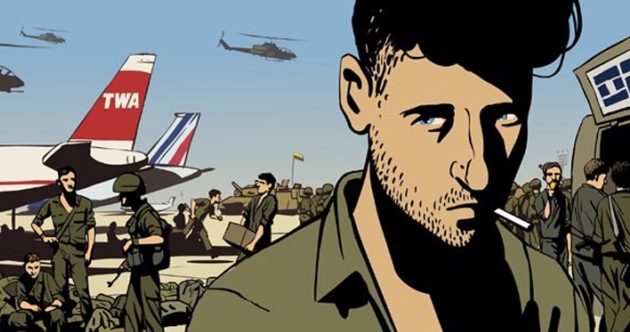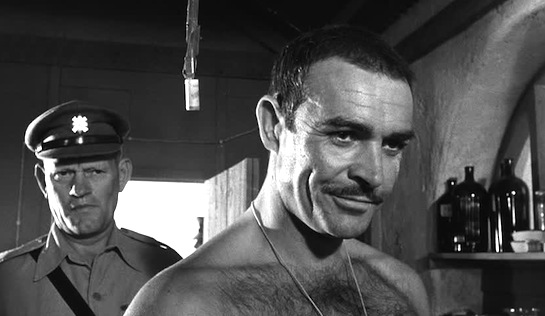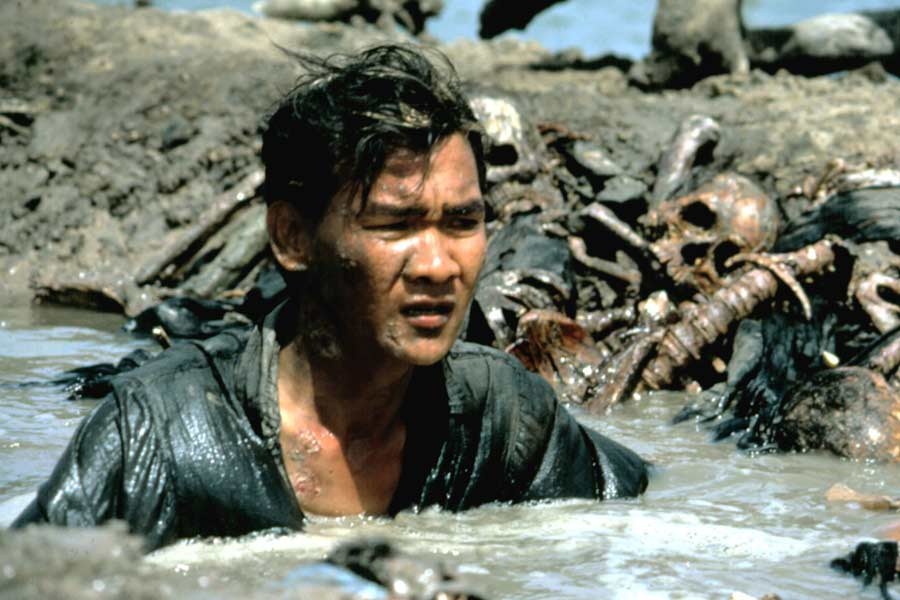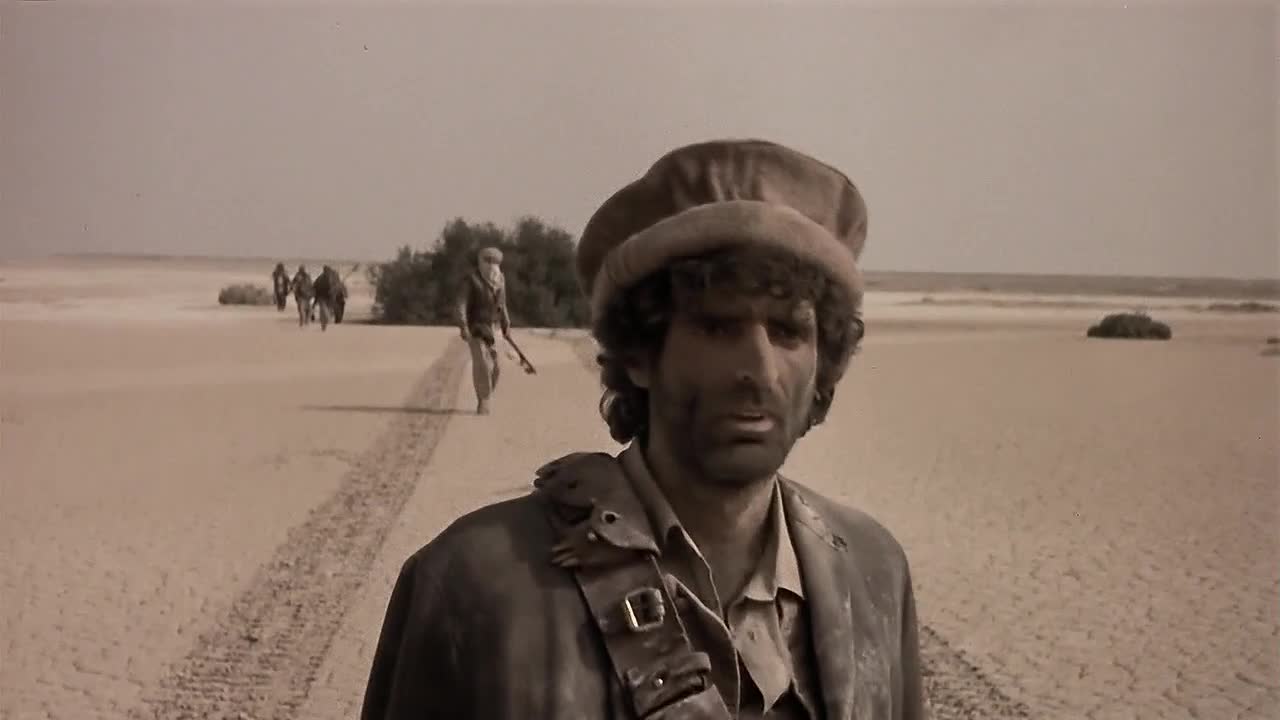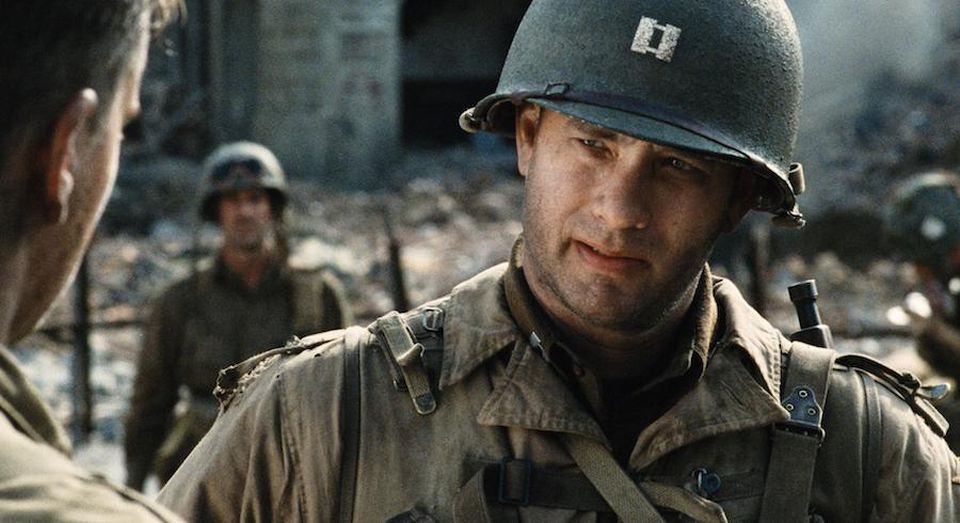
Let’s face it: even thirty titles isn’t really enough as the war movie genre has no shortage of great entries and obviously this list should not be taken as the be-all and end-all compendium of best war movies ever. There’s no MASH, The Big Red One, The Hurt Locker or Platoon even though all those titles and many others were considered and probably deserve a mention as well.
But whilst some great titles might have been left off, it’s safe to say that having seen the 30 selections on this list will give anyone a very solid and quite varied knowledge base on some of the best entries the genre has had to offer over the last eight decades. We tried to simply include just good movies from a variety of nations and eras, dealing with different conflicts and not limited to battle-filled entries only, although those are of course thoroughly represented.
30. Tae Guk Gi: Brotherhood of War (Je-kyu Kang, 2004)
Often lazily referred to as the Korean Saving Private Ryan, Tae Guk Gi: Brotherhood of War is an epic war film which at the time of its release was one of the most expensive South Korean productions ever made as well as becoming the country’s highest grossing film.
The film tells the story of two brothers at the onset of and during the Korean War. The film opens in 2003 at an excavation site when the remains of a soldier and some of the artefacts he was carrying are discovered in preparation for a the placing of a war memorial. An old man is called to the site as the artefacts indicate that the soldier should in fact be him. The movie then flashes back to 1950 where we follow two brothers, the younger Jin-seok and the older Jin-tae, just before the outbreak of the Korean war.
As the North Koreans invade, both brothers end up being drafted into the South Korean army and Jin-tae becomes obsessed with acting heroic as he has been told his younger brother will be released from service if he manages to obtain South Korea’s highest award for courage on the battlefield. But as Jin-tae becomes more and more war obsessed, a sequence of varied events ultimately causes both brothers to fight on opposing sides.
Having been South Korea’s largest production at the time, the results definitively show on screen. Tae Guk Gi: Brotherhood of War is a grand epic war film featuring large scale battles, a sweeping dramatic storyline and a running time of nearly two and a half hours. Whilst the film might be a bit on the maudlin side at times, possibly even more so for Western audiences, the scale and frequency of the battle scenes more than makes up for this. The film went on to win three awards at the two foremost award ceremonies in South Korea each and also won Best Film and Best Director at the Asia-Pacific Film Festival that year.
29. Jarhead (Sam Mendes, 2008)
Based on the book of the same name by U.S. Marine Anthony Swofford, Jarhead is a biographical war movie directed by Sam Mendes about a U.S. sniper being deployed to Saudi Arabia and Kuwait for Operation Desert Shield during the Gulf War.
Anthony “Swoff” Swofford (Jake Gyllenhaal) enlists in the Marines and is noticed by Marine Staff Sergeant Sykes (Jamie Foxx) who makes him take his sniper course. After training finishes Swoff and his unit, including his roommate and spotter Troy (Peter Sarsgaard), are sent to the Gulf. But instead of going into combat, a long period of waiting begins in which the men have nothing to do apart from their daily drills and training.
Boredom sets in and when Swoff manages to get some alcohol and organises a party, he is demoted when the guy covering his shift manages to set a tent on fire which ignites a bunch of flares, waking up the entire camp. As Swoff receives his punishment and also fuelled by the fact that he is paranoid about his girlfriend being unfaithful back home, he starts to shows signs of severe mental stress and when Operation Desert Storm does finally begin, the men still don’t get to see much action.
A war film unlike any other, Jarhead is defined by its lack of action. Being cooped up in the sweltering heat with a bunch of young men, trained for war but with nothing to do instead of wondering what their girls back home are doing and fighting isolation and boredom instead of the enemy, the film paints a unique picture of soldiers at war with themselves.
Jake Gyllenhaal anchors the film with a solid performance in a year that saw him break through with this film as well as Brokeback Mountain and Proof, whilst cinematographer Roger Deakins manages to catch some truly unique and surreal imagery as the men make their way through the war torn the oil fields. Jarhead was met with mixed reviews but is well worth checking out if it isn’t necessarily battle scenes you want out of your war movie.
28. Waltz With Bashir (Vals Im Bashir) (Ari Folman, 2008)
A highly stylized animated documentary feature surrounding the Sabra and Shatila massacre during the 1982 Lebanon War, Waltz with Bashir is Ari Folamn’s autobiographical story of an Israeli film director coming to terms with a horrendous event from his past.
After Folman meets up with a friend in 2006 who was also part of the Israel Defense Forces during the Lebanon War in 1982 and who tells him of a reoccurring nightmare he keeps having, the two men determine that this dream has to do with their experiences as soldiers during the Sabra and Shatila massacre.
The director realises that his own memories of that period seem to have been wiped and he decides to travel the world to speak to other friends, fellow soldiers, a psychologist and a war reporter in order to remember what happened that fateful night. As his memories slowly start to re-emerge, Folman is confronted with the horrendous truth concerning his own culpability in regards to the massacre, something which forced him to forget but will now haunt him forever.
A stunning achievement and a one of a kind documentary feature, Waltz with Bashir is a highly stylized and at times hallucinogenic piece of filmmaking. The movie is part documentary, part war drama, part autobiography and part mystery and manages to work on all of those levels.
The film won a Golden Globe for Best Foreign Language Film, an NSFC Award for Best Film, a César Award for Best Foreign Film and an IDA Award for Best Feature Documentary as well as being in competition for the Palme d’Or at Cannes and receiving nominations for Best Foreign Language Film at the Oscars and a BAFTA for Best Film Not in the English Language. A truly unique film which set a very high bar for what one is capable of doing with animated features.
27. The Train (John Frankenheimer, 1964)
Excellent war adventure by John Frankenheimer who was on a real roll from 1962 to 1966. This thrilling war movie starred Burt Lancaster, Paul Scofield and Jeanne Moreau and was shot in stunning deep focus black and white (something Frankenheimer excelled in during this period).
The story involves the French resistance trying to stop a train full of priceless stolen art from going to Germany. Great action scenes and gritty realism is what make this movie stand out for its time and it’s highly recommend for both lovers of WWII and suspense movies.
Loosely based on the non-fiction book Le Front de l’Art by Rose Valland, whilst incorporating real-life events surrounding train No. 40,044 as it was seized and examined by Lt. Alexandre Rosenberg of the Free French forces outside Paris in August 1944, The Train deals with the Nazis trying to move priceless pieces of art out of Paris to Germany before the city falls into the hands of the allies.
Labiche (Burt Lancaster), a French railway inspector, is part of the resistance. After German Colonel Franz von Waldheim (Paul Scofield) tries to move priceless works of art from the Jeu de Paume Museum back to Germany, he is asked by the museum’s curator, Mademoiselle Villard (Suzanne Flon), to sabotage the train that carries the art.
Initially more interested in destroying a trainload of German weapons, he changes his mind when an engineer, Papa Boule (Michel Simon), is shot for having tried to sabotage the train containing the art. From there on in, the film becomes one long thrill ride as Labiche and the resistance do everything within their power to get the train to stop as it’s heading towards the border.
Filmed in deep focus stark black and white and using a French supporting cast (including Jeanne Moreau) as well as actual French locations and old locomotives, the film has a documentary-like quality and gritty realism to it whilst still also being a nail-biting action thriller. This was the third movie in the fruitful collaboration between director Frankenheimer and Burt Lancaster (the previous two being The Birdman of Alcatraz and Seven Days in May) and a clear influence on many action films which followed in the years to come. If you made the mistake of watching George Clooney’s The Monuments Men recently, this is the perfect film to wash the bad taste from your mouth.
26. The Hill (Sidney Lumet, 1965)
This 1965 UK production, which is based on a television play by Ray Rigby and R.S. Allen, is probably one of the most underseen and underappreciated films in the careers of both Sidney Lumet and Sean Connery.
The movie is set during World War II in a British military detention camp somewhere in the Libyan desert, where soldiers who have been convicted of various military offences are sent to be rehabilitated and serve their time. The camp is ran with an iron fist by Regimental Sergeant Major Wilson (Harry Andrews) and his cruel Staff Sergeant Williams (Ian Hendry), who seems to be more concerned with tormenting the prisoners than actually reforming them.
In this scenario enter five new prisoners, amongst them the rebellious Joe Roberts (Sean Connery), who soon find themselves being forced to double up in the blazing sun over the hill in the middle of the camp, the standard method of disciplining the prisoners there. But when one of the men dies on the hill after being pushed too hard, tensions in the camp mount and rebellion is in the air.
Another film featuring stunning deep focus and dusty black and white photography in addittion to intense performances from the entire cast with Connery and Andrews truly standing out, The Hill ranks amongst the very best films in the prisoner camp sub-genre of the war film. The movie received six BAFTA Award nominations, taking home the one for Best Cinematography and also won awards for Best Screenplay at Cannes and from the Writers’ Guild of Great Britain. Possibly Lumet’s best film shot outside of the United States.
25. The Killing Fields (Roland Joffé, 1984)
Based on the Pulitzer Prize for International Reporting winning articles about the Cambodian war by Sydney Schanberg and the accounts of Cambodian photojournalist Dith Pran, The Killing Fields was the directorial debut of Roland Joffé.
The film tells the story of the two journalists and friends as Schanberg (Sam Waterston) is reporting from Phnom Penh on the United States pull-out from Vietnam and the rise of the Khmer Rouge in Cambodia, relying heavily on his Cambodian friend for inside information.
When the U.S. decides to evacuate all Cambodians from the city as the Khmer Rouge is moving in, Schanberg convinces Pran (Haing S. Ngor) to stay behind to cover the story with disastrous results. After having been arrested by the Khmer Rouge and saved by Pran, who manages to convince them not to execute the American journalists, the men initially manage to hide out in the French embassy.
But when the Khmer Rouge demands that all Cambodians hiding in the embassy are handed over, the embassy relents and Pran is taken away. From there on we follow the separate stories of both men; Pran as he is forced to become a labourer in a prison camp and his subsequent fight for survival, and Schanberg as he is awarded for his work back home whilst feeling nothing but guilt for having left his friend behind and his attempts to locate and extricate him.
A harrowing depiction and brutal exploration of the holocaust which took place in Cambodia under the rule of the Khmer Rouge, The Killing Fields is a masterfully shot film with some truly gruesome and effective imagery of the Cambodian atrocities. The scenes where Pran makes his way through the Valley of Death, littered with the corpses of the victims of the Khmer Rouge, are extremely powerful and upsetting.
The film was nominated for seven Academy Awards, taking home three of them including Best Cinematography and Best Supporting Actor, as well as thirteen BAFTA nominations, winning an impressive ten of them. Haing S. Ngor’s performance as Pran was universally acclaimed and all the more remarkable when taken into account that he wasn’t an actor and an actual survivor of the Khmer Rouge’s prison camps.
24. The Beast of War (Kevin Reynolds, 1988)
Highly overlooked and under-appreciated war drama set during the Russian invasion of Afghanistan, The Beast of War is an adaptation of the play Nanawatai by William Mastrosimone and stars George Dzunda and Jason Patrick as part of a Soviet tank crew.
After a cruel attack on an Afghan village in which many of the villagers are killed, a tank commanded by tyrannical Commander Daskal (Dzundza) gets separated from its platoon and lost on the Afghan plains. Meanwhile Taj (Steven Bauer) returns to his village to find his father and brother killed and together with a group of mujahideen fighters starts hunting down the lone tank. And whilst tensions rise amongst the crew in the boiling claustrophobic belly of the tank, Commander Daskal kills their Afghan crew member Samad (Erick Avari), which causes one of his crew, Konstantin Koverchenko (Jason Patric), to revolt. Daskal responds by tying him to a rock in the dessert and leaving him for the mujahideen not knowing that this will ultimately prove to be his biggest mistake.
A tense war drama which manages to convey the claustrophobia of being hunted in a tank at high temperatures in the desert and the effects of war on one’s humanity, The Beast of War was both critically and commercially overlooked upon its release. But if you like a good war movie and want to see an original entry in the genre, this film comes highly recommended.
